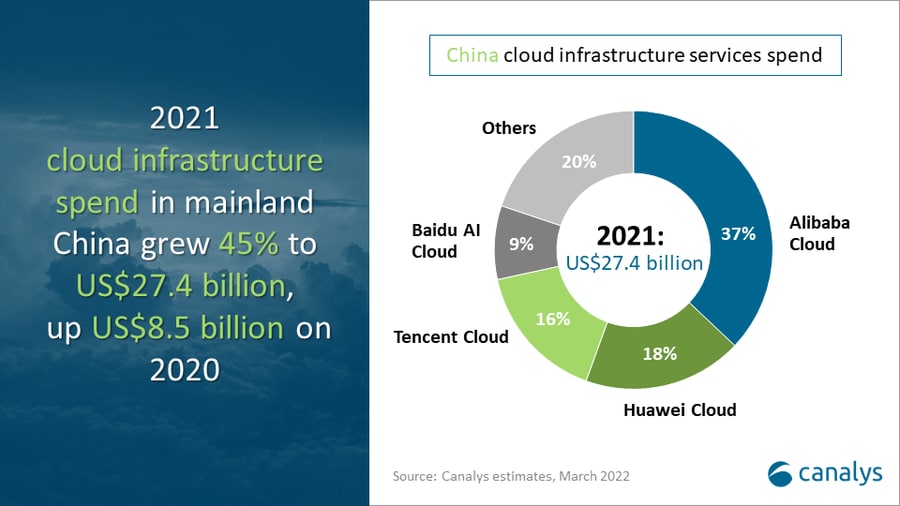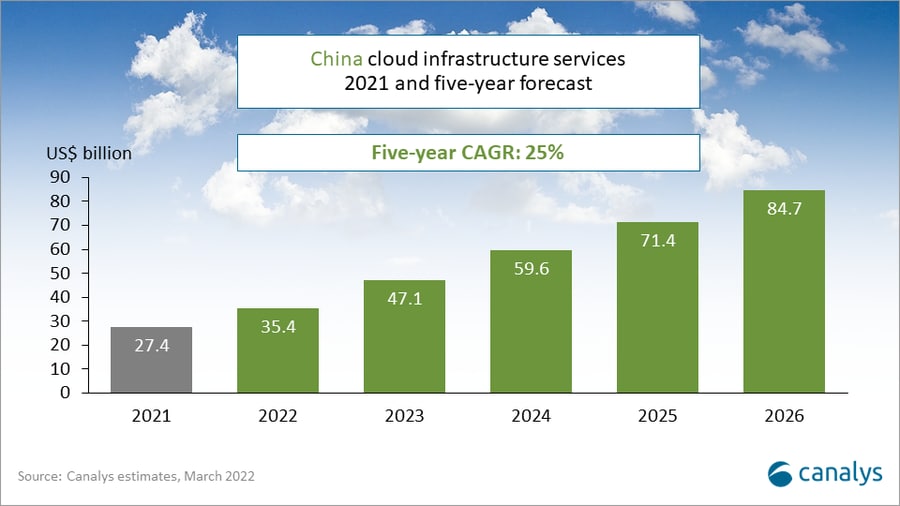Today on March 21, 2022, Canalys issued a report regarding China cloud services market share 2021. In China, the overall 2021 was really powerful in terms of the cloud infrastructure service market. The year was completely successful with a year-on-year (YoY) growth rate of 33% in Q4 of 2021.
JOIN HarmonyOS ans EMUI ON TELEGRAM
Canalys report indicates that the China cloud service market grows by 45% in 2021, which is accounting for 27.4 billion USD. The top four China cloud vendors in 2021 include Alibaba Cloud, Huawei Cloud, Tencent Cloud, and Baidu AI cloud.
These four vendors have covered 80% of the total market in 2021. However, they are continuously launching strategies to capture growth opportunities across the industry vertical solutions.
 After analyzing the cloud market, Canalys shows the high expectations for 2022 and also China to reach 85 billion USD by 2026, representing a five-year CAGR of 25%.
After analyzing the cloud market, Canalys shows the high expectations for 2022 and also China to reach 85 billion USD by 2026, representing a five-year CAGR of 25%.
“Enterprise investment in digital transformation is continuing at pace and has created a massive opportunity for cloud service providers,” said Canalys Research Analyst Blake Murray

Data Report:
Alibaba Cloud maintained its top position with 37% market spending in the cloud market. However, there is a slight decrease in Alibaba’s market share in 2022 because of policy regulation.
Whereas Huawei Cloud got the second position with 18% shares in the 2021 China cloud service market and noted an annual growth of 67%, which is a big achievement. Further, the third provider is Tencent with 16% of the market share and a growing 55%. Followed by Baidu AI Cloud accounted for 9% of the total market and 55% growth rate.

Cloud Services:
According to Canalys, cloud infrastructure services are the services that provide infrastructure as-a-service and platform as-a-service either on dedicated hosted private or shared public infrastructure.
It mainly excludes software-as-a-service expenditure directly but includes revenue generated from the infrastructure services being consumed to host and operate.











